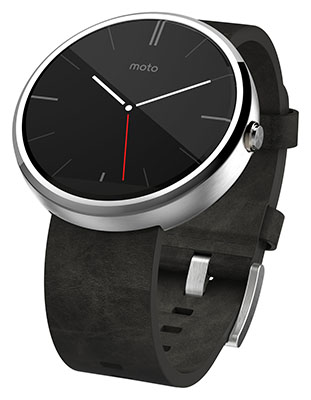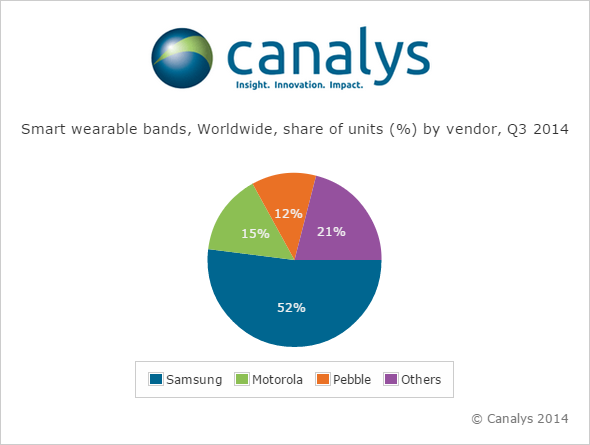 The Moto 360 may have launched later than a number of other Android Wear devices but it appears that this did not dampen early excitement for the smartwatch. According to market research firm Canalys, the Moto 360 accounted for 15% of the overall smart band market in Q3 2014 and was “by far the most successful of the initial Android Wear devices.”
The Moto 360 may have launched later than a number of other Android Wear devices but it appears that this did not dampen early excitement for the smartwatch. According to market research firm Canalys, the Moto 360 accounted for 15% of the overall smart band market in Q3 2014 and was “by far the most successful of the initial Android Wear devices.”

While initial numbers are encouraging, Canalys found that smart band shipments remained flat between Q2 and Q3 even as the overall wearables market which also includes basic wearable bands grew 37% to hit shipments of nearly 5 million units. Canalys sees the imminent launch of the Apple Watch in early 2015 as one factor explaining this. In fact, it expects that the Apple Watch will quickly dominate this space when it launches in 2015.
“The announcement of the Apple Watch late in the quarter has likely had an effect on sales of existing devices, as some consumers will choose to wait for Apple’s wearable,” said Canalys Analyst Daniel Matte. “The smart band market was flat between Q2 and Q3, but with an installed base of over 1.8 billion Android smart phones, there is a huge potential market of Android users not considering an Apple Watch.”
Samsung continues to dominate the overall wearables space with a 52% market share thanks in large part to the fact that it offers a broader range of devices. The recently launched Samsung Gear S is already its sixth smart band. Motorola came in second with its 15% market share with Pebble holding down third place with a 12% market share.
Fitbit and Jawbone continued to dominate the basic wearable band market. Garmin and newcomers Xiaomi and Huawei rounded the top five. Increasing commoditization is already forcing them to add more features to their devices, blurring the lines between the two categories.
Canalys defines smart bands as “multi-purpose devices that serve as accessories to smart devices, are designed to be worn on the body and not carried, and are capable of running third-party computing applications.” Basic wearable bands are defined as “devices serving a specific set of purposes that act as accessories to smart devices, are designed to be worn on the body and not carried, and that cannot run third-party computing applications.”
Source : Canalys
